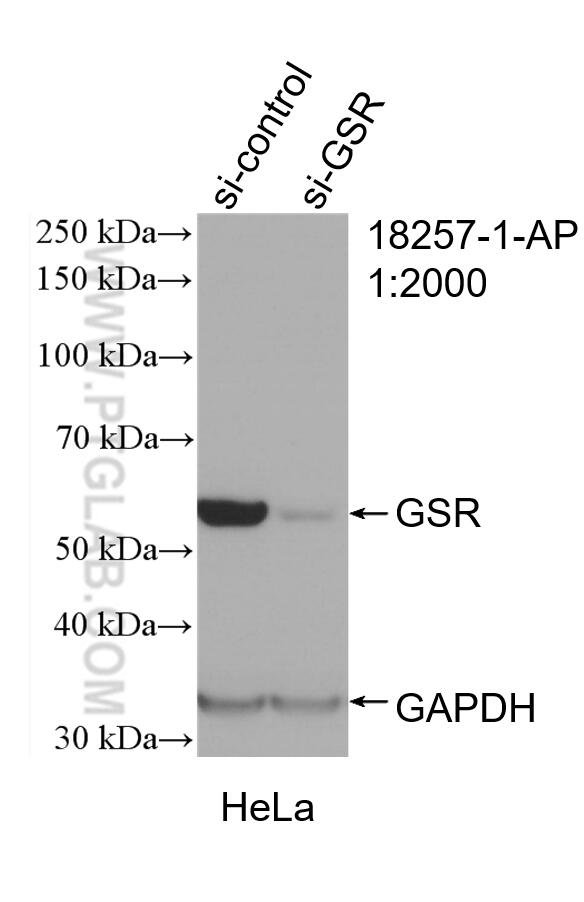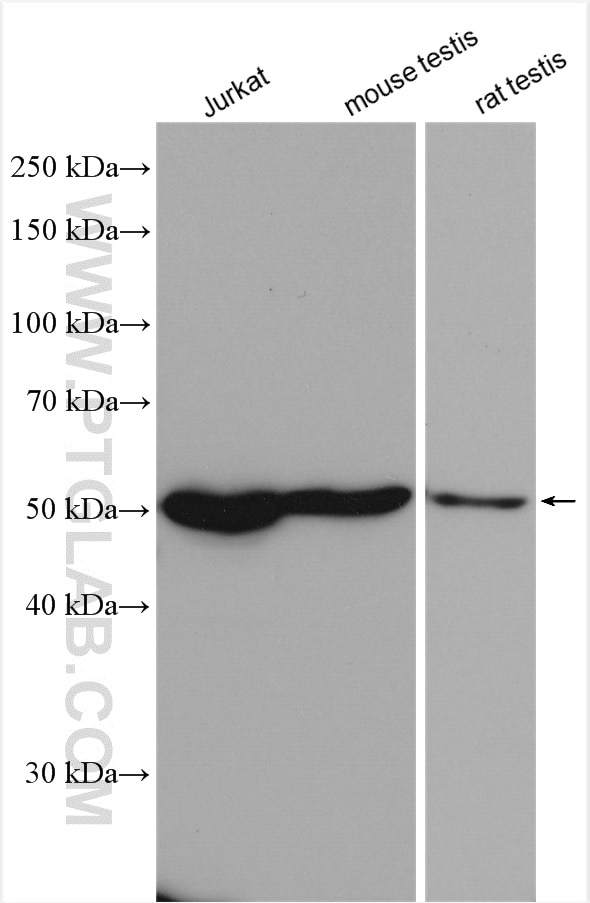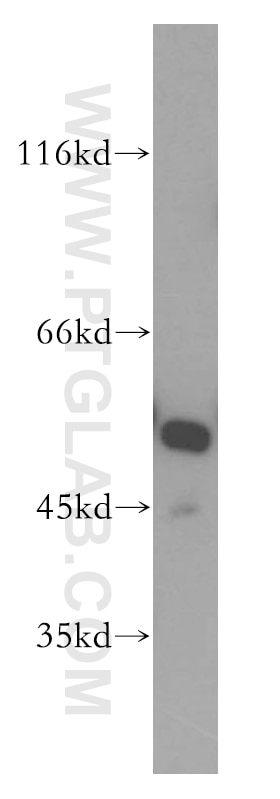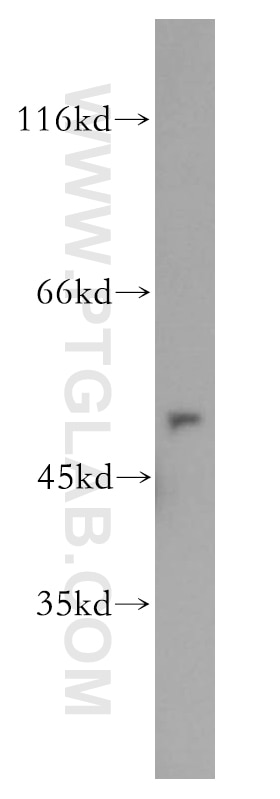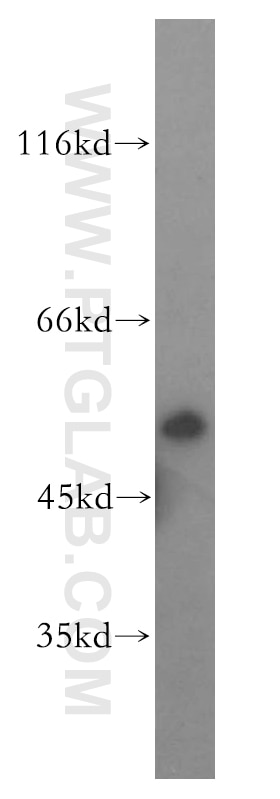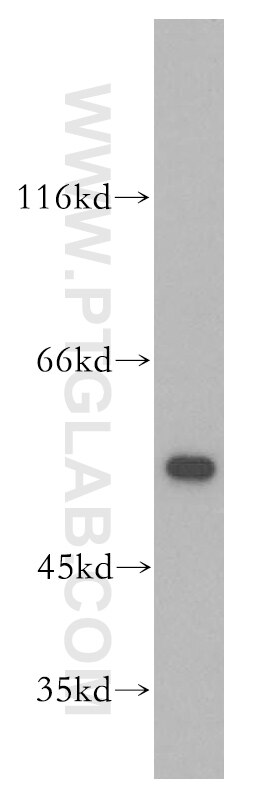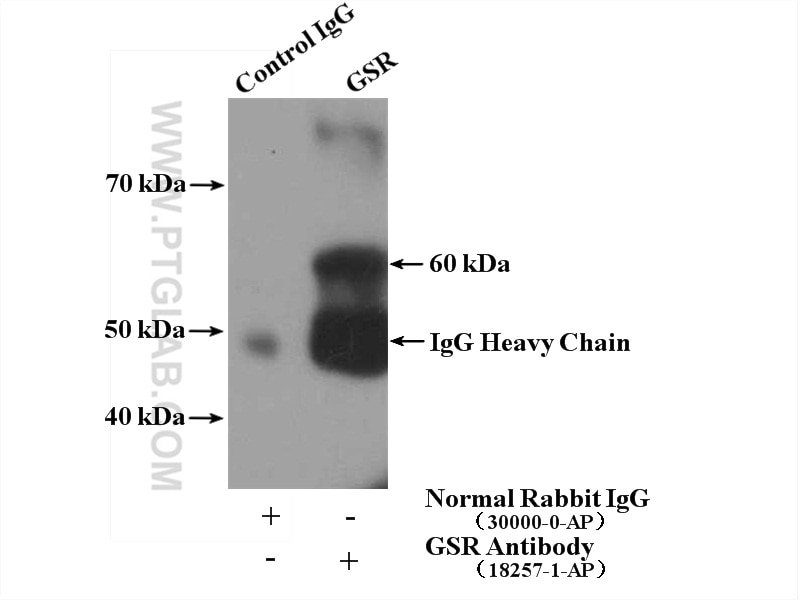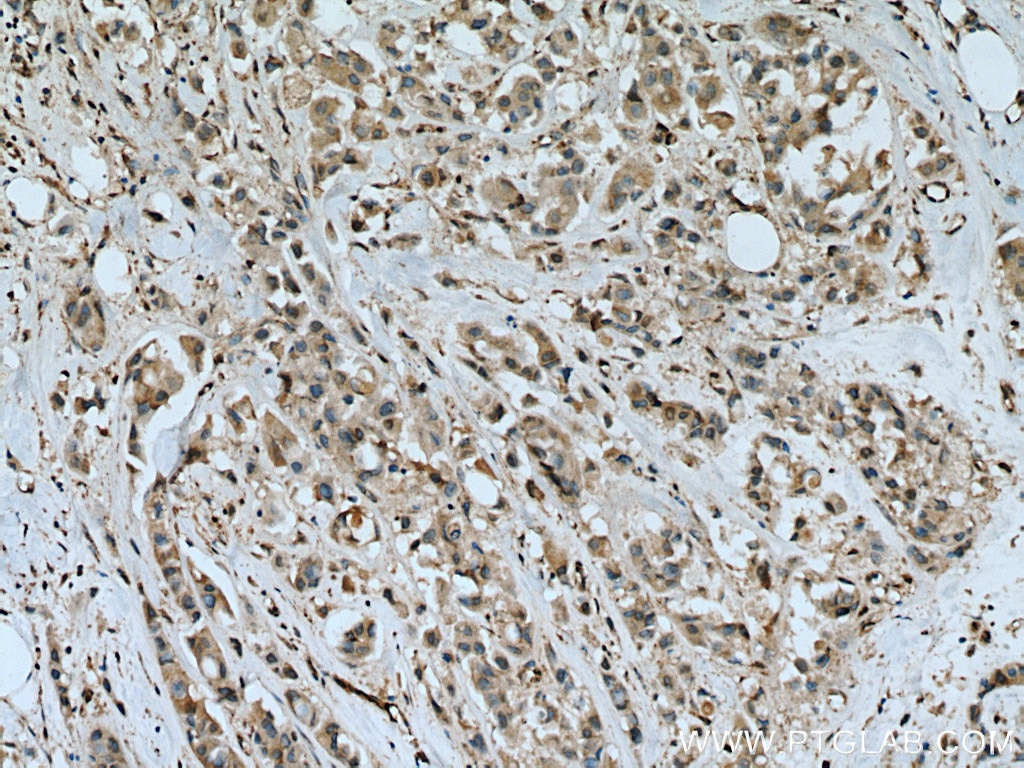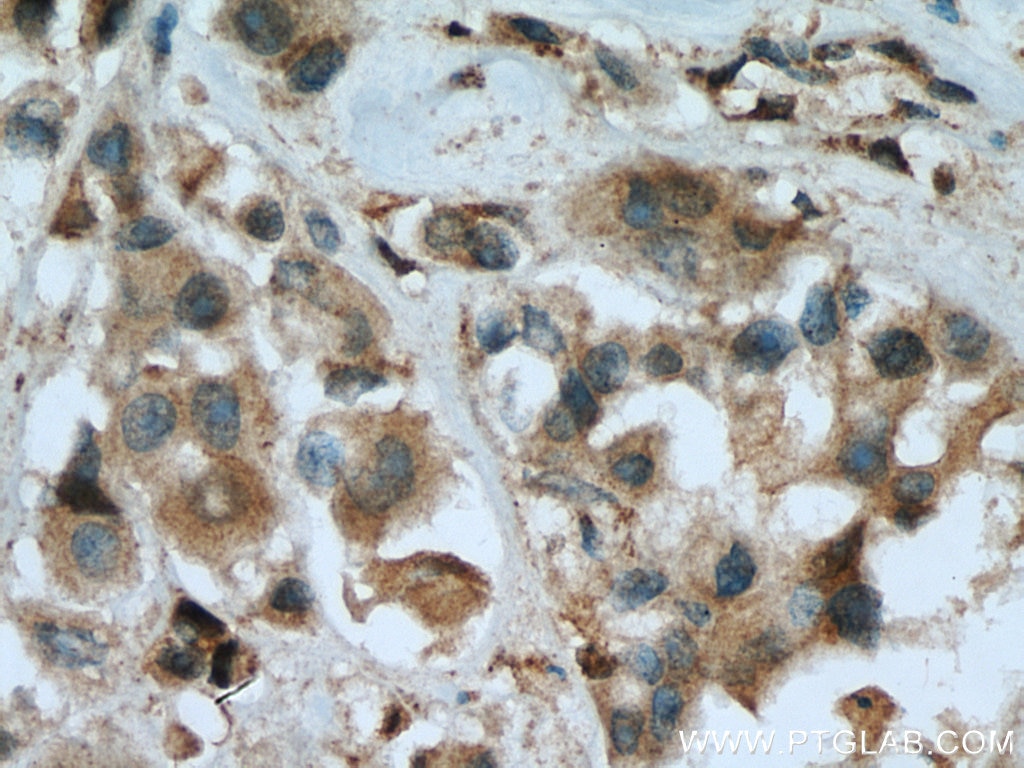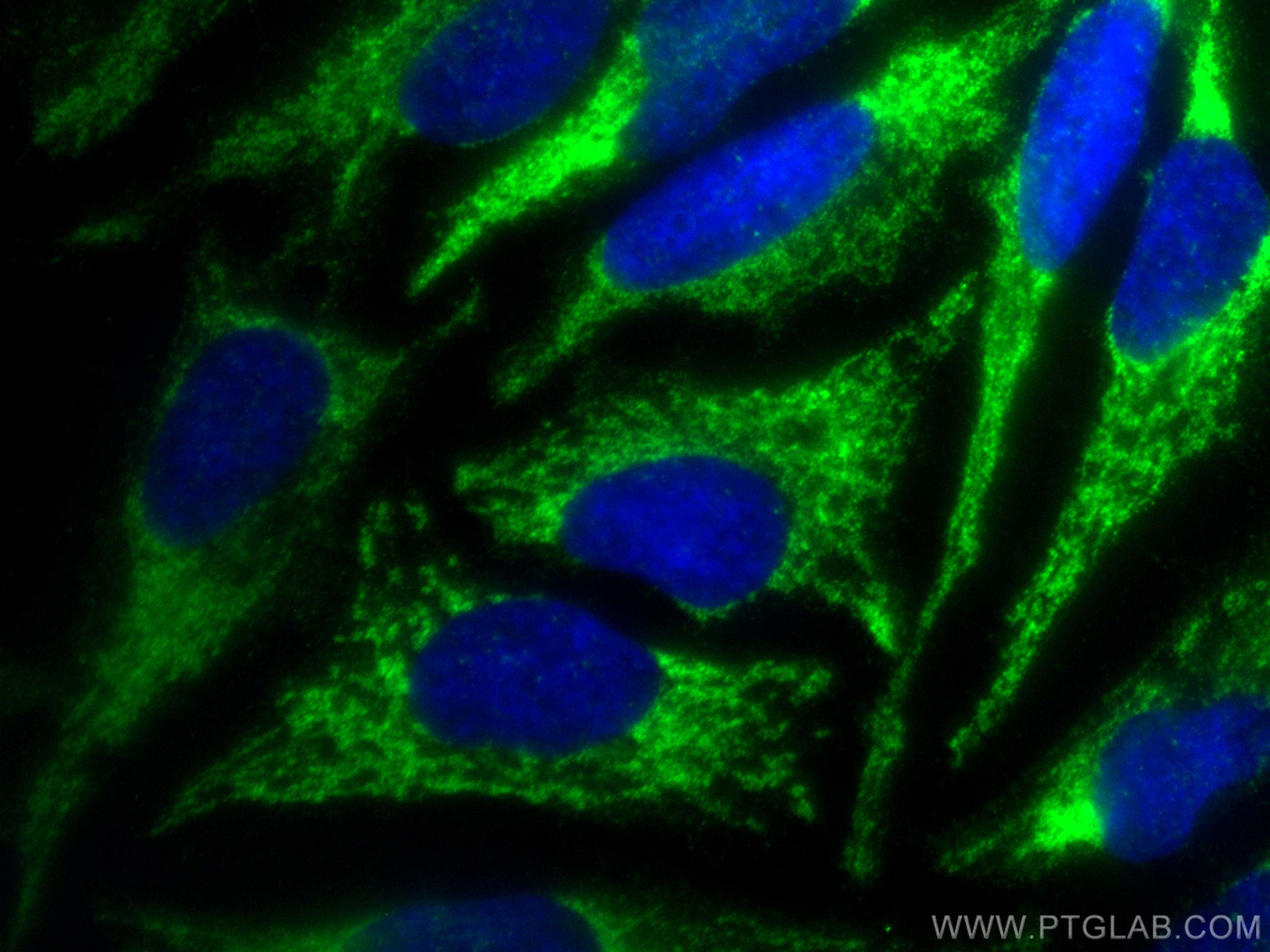- Phare
- Validé par KD/KO
Anticorps Polyclonal de lapin anti-GSR
GSR Polyclonal Antibody for WB, IP, IF, IHC, ELISA
Hôte / Isotype
Lapin / IgG
Réactivité testée
Humain, rat, souris
Applications
WB, IHC, IF/ICC, IP, ELISA
Conjugaison
Non conjugué
N° de cat : 18257-1-AP
Synonymes
Galerie de données de validation
Applications testées
| Résultats positifs en WB | cellules Jurkat, cellules HeLa, tissu placentaire humain, tissu pulmonaire de souris, tissu testiculaire de rat, tissu testiculaire de souris |
| Résultats positifs en IP | cellules HeLa |
| Résultats positifs en IHC | tissu de cancer du sein humain, il est suggéré de démasquer l'antigène avec un tampon de TE buffer pH 9.0; (*) À défaut, 'le démasquage de l'antigène peut être 'effectué avec un tampon citrate pH 6,0. |
| Résultats positifs en IF/ICC | cellules HeLa, |
Dilution recommandée
| Application | Dilution |
|---|---|
| Western Blot (WB) | WB : 1:1000-1:4000 |
| Immunoprécipitation (IP) | IP : 0.5-4.0 ug for 1.0-3.0 mg of total protein lysate |
| Immunohistochimie (IHC) | IHC : 1:200-1:800 |
| Immunofluorescence (IF)/ICC | IF/ICC : 1:50-1:500 |
| It is recommended that this reagent should be titrated in each testing system to obtain optimal results. | |
| Sample-dependent, check data in validation data gallery | |
Applications publiées
| KD/KO | See 1 publications below |
| WB | See 20 publications below |
Informations sur le produit
18257-1-AP cible GSR dans les applications de WB, IHC, IF/ICC, IP, ELISA et montre une réactivité avec des échantillons Humain, rat, souris
| Réactivité | Humain, rat, souris |
| Réactivité citée | rat, Humain, souris |
| Hôte / Isotype | Lapin / IgG |
| Clonalité | Polyclonal |
| Type | Anticorps |
| Immunogène | GSR Protéine recombinante Ag13080 |
| Nom complet | glutathione reductase |
| Masse moléculaire calculée | 522 aa, 56 kDa |
| Poids moléculaire observé | 52-55 kDa |
| Numéro d’acquisition GenBank | BC069244 |
| Symbole du gène | GSR |
| Identification du gène (NCBI) | 2936 |
| Conjugaison | Non conjugué |
| Forme | Liquide |
| Méthode de purification | Purification par affinité contre l'antigène |
| Tampon de stockage | PBS avec azoture de sodium à 0,02 % et glycérol à 50 % pH 7,3 |
| Conditions de stockage | Stocker à -20°C. Stable pendant un an après l'expédition. L'aliquotage n'est pas nécessaire pour le stockage à -20oC Les 20ul contiennent 0,1% de BSA. |
Informations générales
GSR(Glutathione reductase) is also named as GLUR, GRD1 and belongs to the class-I pyridine nucleotide-disulfide oxidoreductase family.It was first found in a black American a variant red cell GSR characterized by greater electrophoretic mobility and enzyme activity per unit of hemoglobin than the normal.This protein maintains high levels of reduced glutathione in the cytosol.It has 5 isoforms produced by alternative splicing and alternative initiation.It can also exsit as a homodimer with the molecular weight of 110KDa(PMID:8631352).This antibody is specific to GSR.
Protocole
| Product Specific Protocols | |
|---|---|
| WB protocol for GSR antibody 18257-1-AP | Download protocol |
| IHC protocol for GSR antibody 18257-1-AP | Download protocol |
| IF protocol for GSR antibody 18257-1-AP | Download protocol |
| IP protocol for GSR antibody 18257-1-AP | Download protocol |
| Standard Protocols | |
|---|---|
| Click here to view our Standard Protocols |
Publications
| Species | Application | Title |
|---|---|---|
Redox Biol Fast regulation of the NF-κB signalling pathway in human skeletal muscle revealed by high-intensity exercise and ischaemia at exhaustion: Role of oxygenation and metabolite accumulation. | ||
Cell Rep The Ets transcription factor GABP is a component of the hippo pathway essential for growth and antioxidant defense. | ||
Nutrients A Mango Leaf Extract (Zynamite®) Combined with Quercetin Has Exercise-Mimetic Properties in Human Skeletal Muscle | ||
Pharmacol Res Phyto-sesquiterpene lactones DET and DETD-35 induce ferroptosis in vemurafenib sensitive and resistant melanoma via GPX4 inhibition and metabolic reprogramming. | ||
Free Radic Biol Med Glutaredoxins concomitant with optimal ROS activate AMPK through S-glutathionylation to improve glucose metabolism in type 2 diabetes. | ||
Free Radic Biol Med Antioxidant defense in quiescent cells determines selectivity of electron transport chain inhibition-induced cell death. |
